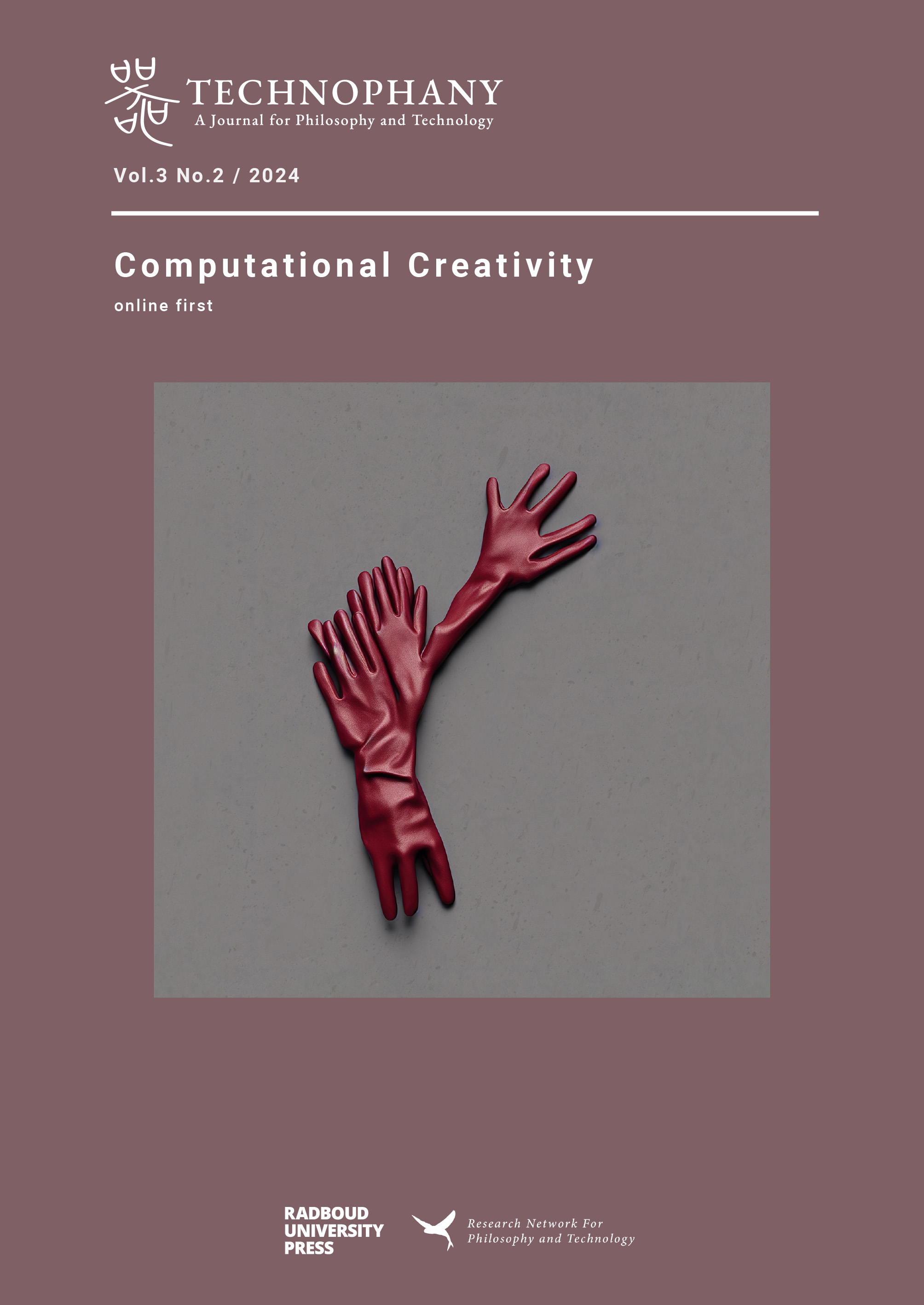Creativity, co-evolution and co-production
The machine as art and as artist
DOI:
https://doi.org/10.54195/technophany.17927Keywords:
Individuation, organology, art, creativity machineAbstract
With the understanding that art and technology continue to experience a (rapidly escalating) historical rapprochement, but also with the understanding that our comprehension of art and technology has tended to be constrained by scientific rigour and calculative thinking by one side, or have tended to change to the extreme from the lyrical: the objective of this article is to provide a reflective look for artists, humanists, scientists and engineers to consider these developments from the broader perspective it deserves, while maintaining a focus on what should be the emerging core of this topic which is the relationship between art, technology and science: the state of the art in mechatronics and computing today is such that we can now begin to speak comfortably of the machine as artist, and we can begin to hope, too, that an aesthetic sensibility on the part of the machine might help generate an intelligent more friendly and responsive machine agency overall. The principle of the inhuman emphasises that the questions of ontology are not questions of being as subject, of being as consciousness, of being as Dasein, of being as body, of being as language, of being as human or of being as power, but of being as being. Finally, the ontological principle hypotheses that all beings are ontologically on an equal footing or that all are to the extent that they make a difference. However, until now not much has been said about “algorithmic entities”. From the above, it is clear that there are still many unanswered questions, for example: How to raise the question of techno-diversity when intellectuals yearn for a general artificial intelligence? We must go back to history to orient ourselves in our current situation with a sense of distance. Will it be possible to find strategies to free ourselves from this apocalyptic end of technological singularity and reopen the question of the creative future in machines in relation to humans?
Downloads

Downloads
Published
Issue
Section
License
Copyright (c) 2025 Technophany, A Journal for Philosophy and Technology

This work is licensed under a Creative Commons Attribution 4.0 International License.







